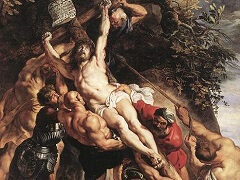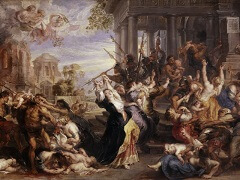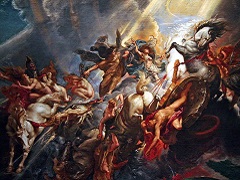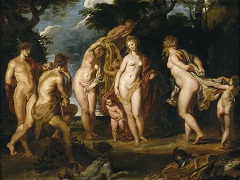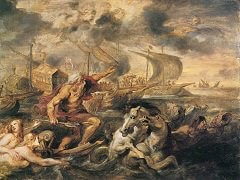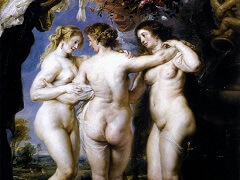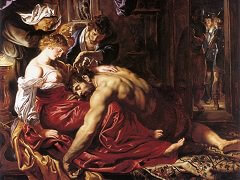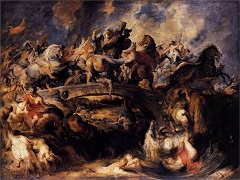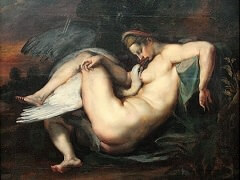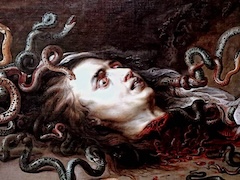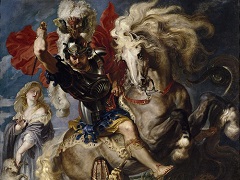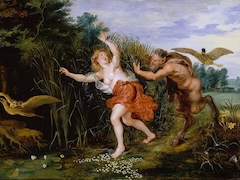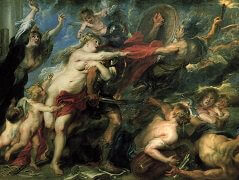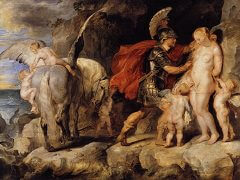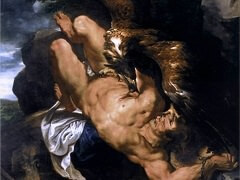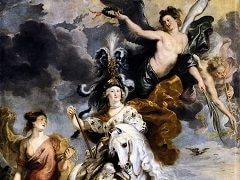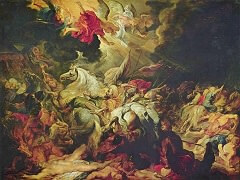Venus, Cupid, Bacchus and Ceres, 1612 by Peter Paul Rubens
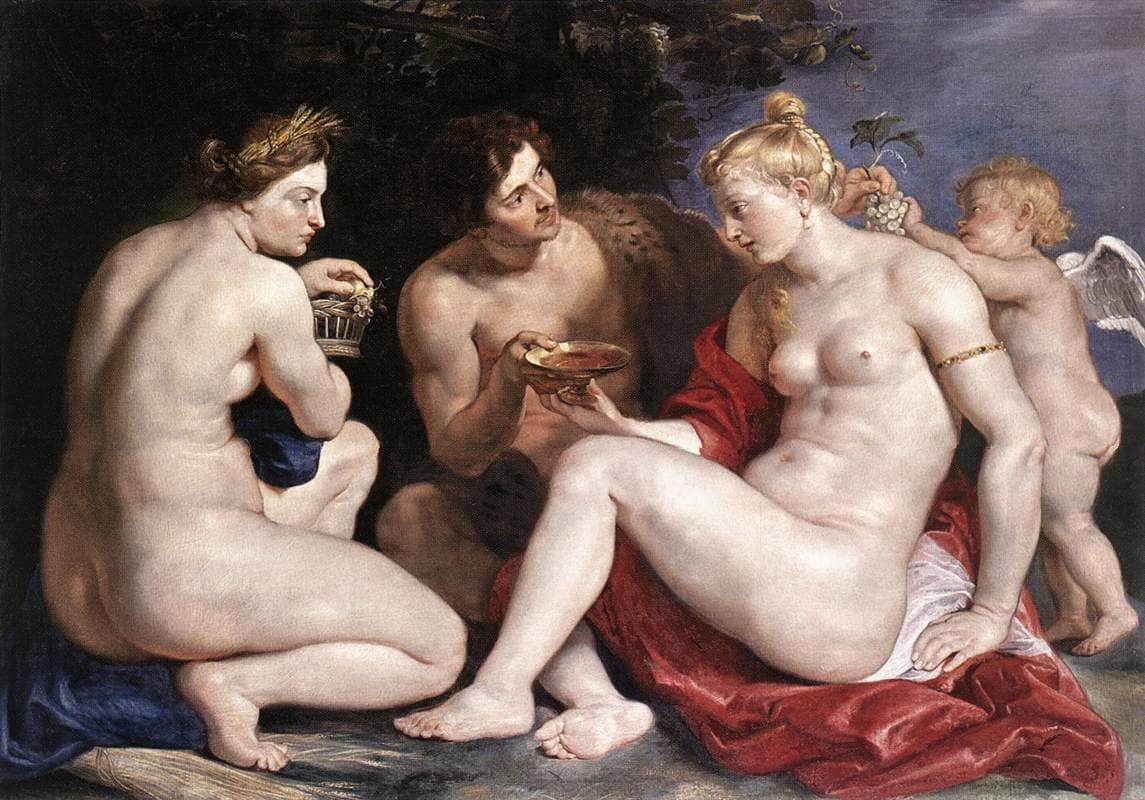
Venus and her son Cupid are being offered food and wine by Ceres, goddess of the fruits of the field, and Bacchus, god of wine. The subject comes from a line by the Roman comic poet Terence which frequently figures in the emblem literature that developed from the mid-16th century: 'Sine Cerere et Libero friget Venus' - without Ceres and Bacchus, Venus would freeze. Love is impossible without food and drink. Rather than depicting a boisterous feast, Rubens has opted for a rather restrained scene that must be read as a plea for moderation in pleasure.
Rubens produced this painting a few years after his eight-year stay in Italy, where he was employed at the court of Duke Vincenzo Gonzaga of Mantua, and also in Rome. The knowledge of antiquity he gained then was put to use in this painting, as also in a later work on the same theme in 1614, (Royal Fine Arts Museum, Antwerp), Ceres' pose being taken from the Crouching Venus of the Hellenistic sculptor Doidalsas, dating from around 240-230 BC. Rubens certainly knew the marble copy in the Farnese collection in Rome (today in the National Archaeological Museum, Naples).
What he particularly appreciated in Hellenistic and Roman sculpture was its formal dynamism, although he saw in ancient sculpture generally a realm of flawless, ideal nature. In painting from such antique models, he says in his De Imitatione Statuarum, a treatise 'on the imitation of sculpture', the statuary has to be humanised, translated into flesh and blood.

